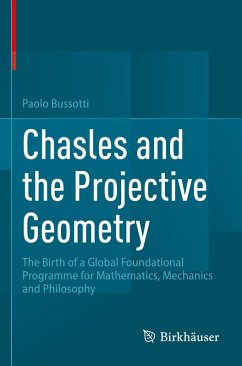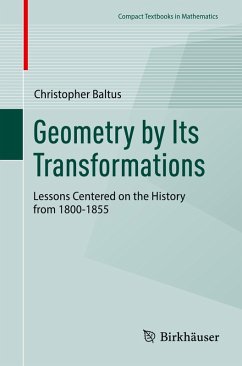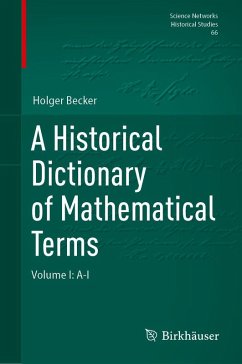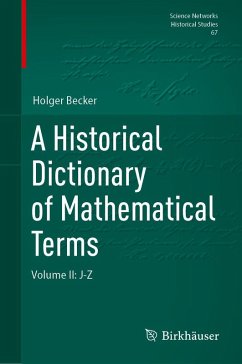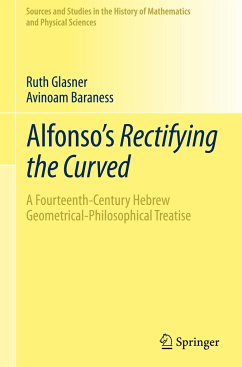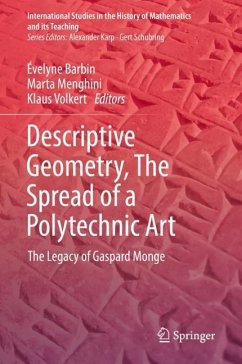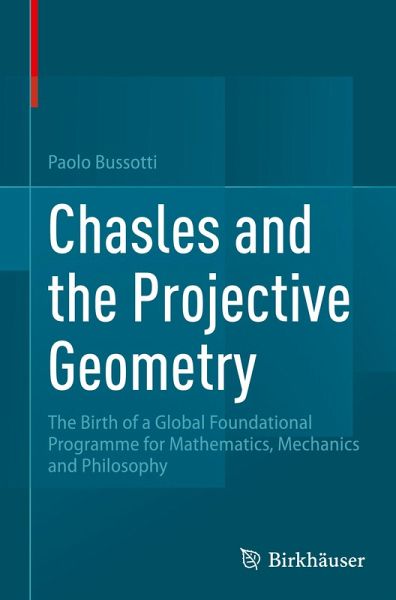
Chasles and the Projective Geometry
The Birth of a Global Foundational Programme for Mathematics, Mechanics and Philosophy
Versandkostenfrei!
Versandfertig in 6-10 Tagen
129,99 €
inkl. MwSt.
Weitere Ausgaben:

PAYBACK Punkte
65 °P sammeln!
This monograph meticulously examines the contributions of French mathematician Michel Chasles to 19th-century geometry. Through an in-depth analysis of Chasles' extensive body of work, the author examines six pivotal arguments which collectively reshape the foundations of geometry. Chasles introduces a novel form of polarity, termed "parabolic," to the graphic context, so expressing the metric properties by means of this specific polarity a foundational argument. Beyond the celebrated "Chasles theorem," he extends his analysis to the movement of a rigid body, employing concepts derived from pr...
This monograph meticulously examines the contributions of French mathematician Michel Chasles to 19th-century geometry. Through an in-depth analysis of Chasles' extensive body of work, the author examines six pivotal arguments which collectively reshape the foundations of geometry. Chasles introduces a novel form of polarity, termed "parabolic," to the graphic context, so expressing the metric properties by means of this specific polarity a foundational argument. Beyond the celebrated "Chasles theorem," he extends his analysis to the movement of a rigid body, employing concepts derived from projective geometry. This approach is consistently applied across diverse domains. Chasles employs the same methodology to analyze systems of forces. The fourth argument examined by the author concerns the principle of virtual velocities, which can also be addressed through a geometric analysis. In the fifth chapter, Chasles' philosophy of duality is explained. It is grounded on thedualityprinciples of projective geometry. Finally, the author presents Chasles synthetic solution for the intricate problem of ellipsoid attraction the sixth and concluding chapter. Throughout these explorations, Chasles engages in a dynamic scientific dialogue with leading physicists and mathematicians of his era, revealing diverse perspectives and nuances inherent in these discussions.
Tailored for historians specializing in mathematics and geometry, this monograph also beckons philosophers of mathematics and science, offering profound insights into the philosophical, epistemological, and methodological dimensions of Chasles' groundbreaking contributions. Providing a comprehensive understanding of Chasles' distinctive perspective on 19th-century geometry, this work stands as a valuable resource for scholars and enthusiasts alike.
Tailored for historians specializing in mathematics and geometry, this monograph also beckons philosophers of mathematics and science, offering profound insights into the philosophical, epistemological, and methodological dimensions of Chasles' groundbreaking contributions. Providing a comprehensive understanding of Chasles' distinctive perspective on 19th-century geometry, this work stands as a valuable resource for scholars and enthusiasts alike.



